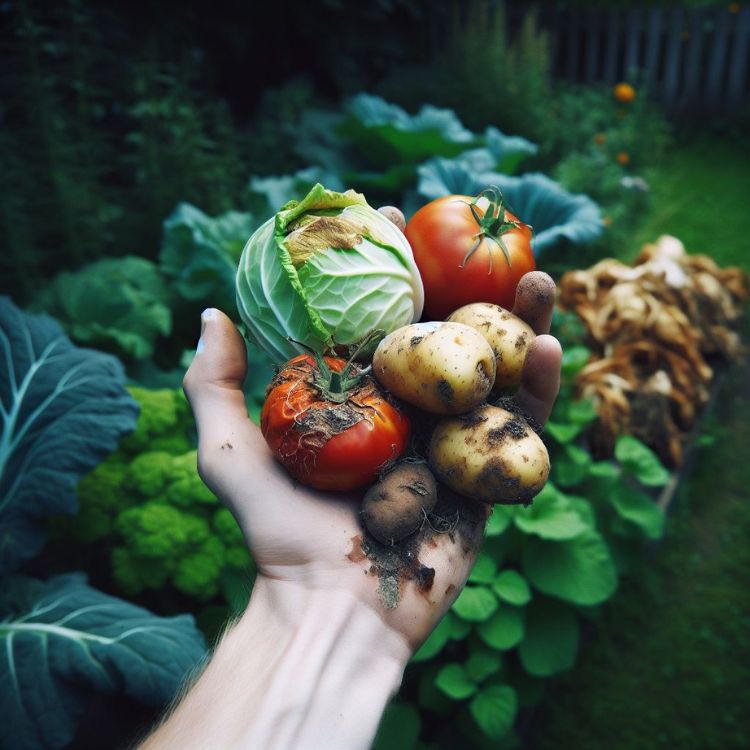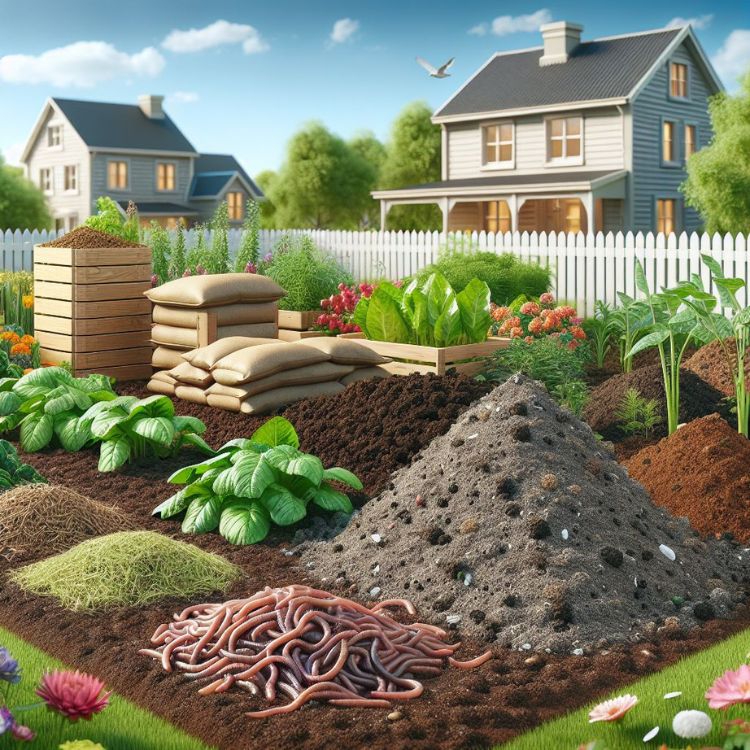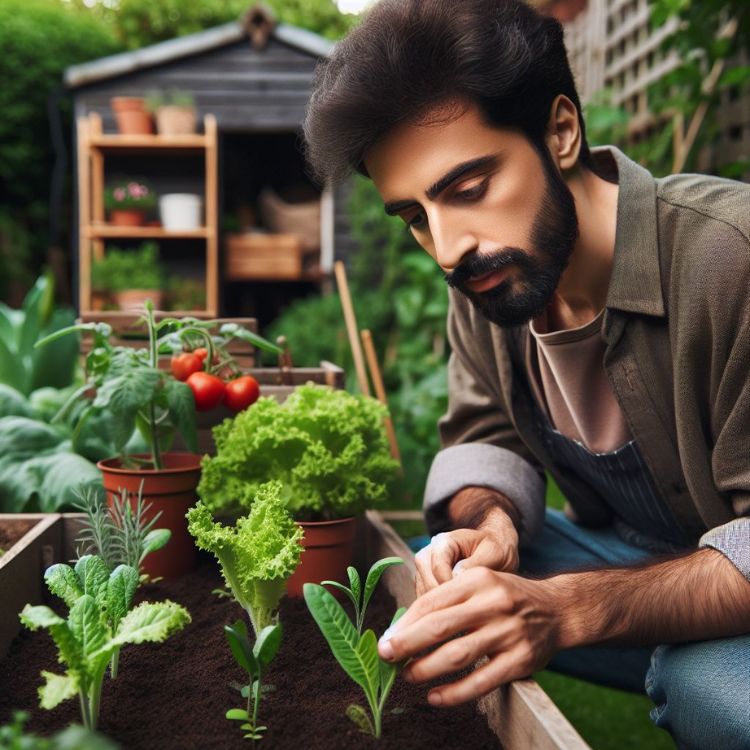
Key Takeaways
- Identify plant diseases early by recognizing symptoms such as discoloration and wilting.
- Improve soil health with natural amendments like compost to boost plant immunity.
- Choose disease-resistant plant varieties to reduce the risk of infections.
- Adopt smart watering techniques to prevent the spread of disease.
- Keep your garden tools clean and dispose of diseased plant material safely.
Spot the Trouble Early: Recognizing Signs of Plant Diseases
When it comes to keeping your garden lush and productive, early detection of plant diseases can make all the difference. It’s like catching a cold early; the sooner you know, the sooner you can take action. Most importantly, understanding what to look for is key. Keep an eye out for any unusual spots on leaves, a sudden change in leaf color, or plants that seem wilted despite proper watering. These can all be signs that something is amiss.
It’s not just about spotting the symptoms, though. Once you see something out of the ordinary, take a closer look. For instance, a white powdery substance might indicate powdery mildew, while black spots could be a sign of black spot disease. By knowing these signs, you’re already one step ahead in the battle against plant diseases.
Example: I noticed my rose bush leaves had black spots expanding outward. After a quick search, I learned it was black spot disease, a common fungal issue in roses. Because I caught it early, I could treat it before it spread to the rest of the plant.
Typical Symptoms of Unhealthy Plants
Let’s break down the usual suspects when it comes to plant disease symptoms:
- Discoloration: Yellowing leaves might signal a nutrient deficiency or a disease like chlorosis.
- Spots and Patches: Watch for brown, black, or white spots that can indicate a variety of fungal infections.
- Wilting: If your plant droops or wilts without a lack of water, it could be a sign of root rot or a bacterial infection.
- Stunted Growth: When plants don’t reach their full potential, it could be due to a disease limiting nutrient uptake.
- Distorted Shapes: Leaves or stems that look twisted or misshapen can be a symptom of viral infections.
Early Intervention Strategies
So, what do you do when you spot these symptoms? Here’s what I recommend:
- Isolate: If possible, remove the affected plant from the rest to prevent the spread of the disease.
- Identify: Take a sample of the affected area to your local garden center or use online resources to pinpoint the disease.
- Act: Depending on the disease, you might need to remove the infected parts, apply a natural fungicide, or, in severe cases, remove the entire plant.
Remember, the goal is to act swiftly and smartly. By doing so, you’re not just saving one plant but potentially your entire garden from a widespread outbreak.
Get to the Root: Improving Soil Health

Healthy soil is like a strong foundation for a house—it’s essential for the well-being of your plants. Soil that’s rich in nutrients and organic matter not only feeds your plants but also helps them fend off diseases. Therefore, focusing on improving your soil’s health should be a top priority.
To start, incorporating organic matter like compost is a game-changer. Compost introduces beneficial microorganisms that help break down organic material, making nutrients more accessible to your plants. Plus, it improves soil structure, which means better water retention and drainage—both critical to preventing root diseases.
The Role of Soil Quality in Plant Health
Think of soil as a complex ecosystem that supports your plants. Good soil has the right balance of air, water, minerals, and organic material. This balance ensures that plants get everything they need to grow strong and resist diseases. In contrast, poor soil can leave plants vulnerable and stressed, making them more susceptible to diseases.
Natural Amendments for Nutrient-Rich Soil
Boosting your soil doesn’t have to involve chemicals or synthetic fertilizers. Here are some natural amendments that can do wonders: learn more about soil health and insect/worm integration for your garden.
- Compost: Rich in nutrients and beneficial microbes, it’s the gold standard for soil amendment.
- Worm Castings: A powerhouse of nutrients, worm castings also contain enzymes that help plants absorb nutrients more efficiently.
- Green Manure: Cover crops like clover or vetch can be grown and then turned into the soil to add organic matter and nutrients.
By enriching your soil with these natural amendments, you’re not just feeding your plants; you’re building an environment where diseases have a harder time taking hold.
Water Wisely: Irrigation Techniques That Prevent Disease
Water is life for your garden, but it’s also a lifeline for plant diseases. The key is to water wisely. Overhead watering can seem like a good idea, but it can leave foliage wet, which is a perfect environment for fungal diseases to thrive. Instead, aim for the soil, not the leaves. Drip irrigation systems or soaker hoses are excellent for this as they deliver water directly to the base of the plant, minimizing moisture on the leaves and reducing the risk of fungal diseases.
Effective Watering Schedules to Deter Fungi
Timing is everything when it comes to watering. The best time to water is in the morning. This gives the plants time to absorb the water before the heat of the day and allows any moisture on the leaves to dry out quickly. Evening watering might seem like a good idea, but it can leave plants damp overnight, which is an open invitation for fungi to move in.
Irrigation Methods That Keep Leaves Dry
Let’s talk about irrigation methods that are not just efficient but also disease-preventive:
- Drip Irrigation: This system slowly drips water to the plant’s root zone, keeping the foliage dry.
- Soaker Hoses: Similar to drip irrigation, soaker hoses allow water to seep out slowly along their length, targeting the soil rather than the plant foliage.
- Watering Cans: If you’re watering by hand, aim the stream directly onto the soil and avoid splashing the leaves.
By choosing these methods, you’ll not only conserve water but also create an environment that’s less hospitable to plant pathogens.
Maintain Cleanliness: Garden Hygiene Practices
Just like we wash our hands to prevent the spread of germs, keeping your garden tools clean is a simple yet effective way to prevent the spread of plant diseases. After working with infected plants, disinfect your tools with a solution of one part bleach to nine parts water. And it’s not just about tools; pots, trays, and even stakes can harbor diseases. Make it a habit to clean and disinfect these items before reusing them.
Sanitizing Tools and Pots
Cleaning your tools isn’t complicated, but it’s a step that’s often overlooked. Here’s a quick guide:
- Wash: Remove soil and plant debris from tools and pots with soap and water.
- Disinfect: Soak or wipe them with a disinfectant solution.
- Dry: Allow them to dry thoroughly to prevent rust and further microbial growth.
Managing Garden Debris and Waste
Dealing with garden waste properly is another crucial aspect of garden hygiene. Diseased plant material can be a source of infection for the next season if not handled correctly. Don’t just leave it on the ground or toss it in the compost bin. Infected material should be removed from the garden and disposed of safely, which often means burning or bagging it for trash collection to prevent disease spread.
Embrace Natural Allies: Using Beneficial Insects
Beneficial insects are the unsung heroes of the garden. They can help control pests that spread diseases and also pollinate your plants. Creating a habitat that attracts these allies is a natural and effective way to maintain plant health. Plants like marigolds, sunflowers, and lavender can attract beneficial insects like ladybugs, bees, and lacewings. For more information on how to protect your plants, check out these garden pest control methods.
Attracting Insect Helpers
Attracting beneficial insects is like throwing a party and making sure all the right guests show up. Here’s how you can make your garden irresistible to them:
- Plant Diversity: A variety of plants will attract a variety of insects, providing a balanced ecosystem.
- Flowering Plants: Flowers provide nectar and pollen, which are food sources for many beneficial insects.
- Shelter: Leave some areas of your garden a little wild to offer shelter for insects to breed and overwinter.
Creating a Balanced Ecosystem
A balanced ecosystem is the ultimate goal for any gardener. It means that you have a mix of plants and insects that support each other. Beneficial insects keep the harmful ones in check, reducing the need for chemical pesticides, which can harm more than just the pests. It’s about creating a cycle of life where each organism plays a role in supporting the health of your garden.
Rotate Your Crops: The Power of Diversity
Crop rotation is a tried-and-true method used by farmers for centuries to keep the soil healthy and disease-free. By rotating where you plant certain crops each year, you can prevent diseases from taking hold. Some diseases can linger in the soil, waiting for the same plant to come back the next year. By switching up the location, you’re essentially outsmarting these pathogens.
Planning a Crop Rotation Schedule
Planning a rotation schedule can seem daunting, but it’s really about observing patterns and making a plan. Start by dividing your garden into sections and rotating different plant families through those sections each year. For example, don’t plant tomatoes in the same spot where you had potatoes last year since they’re both susceptible to similar diseases.
How Rotation Can Prevent Soil-Borne Diseases
Crop rotation interrupts the life cycle of pathogens by depriving them of their preferred host plants. This is how it works:
- Disease Break: Moving crops to different areas gives the soil a break from specific pathogens.
- Nutrient Balance: Different plants have different nutrient needs; rotation helps prevent depletion of specific nutrients.
- Pest Confusion: Many pests are plant-specific. When you move plants, you can confuse and reduce the population of these pests.
Therefore, a little planning with crop rotation can lead to a healthier, more resilient garden.
Stay Vigilant: Routine Monitoring and Maintenance

Keeping a watchful eye on your garden is essential. Regular inspections can help you catch problems before they become serious. Look for signs of disease, monitor insect activity, and check the overall health of your plants. It’s like being a detective in your own garden, searching for clues that something might be amiss. For more detailed guidance, consider reading about urban survival garden tips to help you avoid common pitfalls and maximize your yields.
Regular Garden Inspections
Make it a routine, whether it’s daily or weekly, to walk through your garden and inspect your plants. Look for changes in color, texture, or growth. If you spot something, address it immediately. The sooner you catch a problem, the easier it is to manage.
Keeping Track of Plant Health Logs
Maintaining a garden log can be a valuable tool. Note what you plant, when you plant it, and any issues that arise. This historical record will help you make better decisions in the future, like which plants are more disease-resistant or what strategies worked best to combat problems.
By staying vigilant and keeping detailed records, you’ll be well-equipped to handle whatever challenges your garden faces.
Act Fast: Organic Remedies and Treatments
When you spot the first signs of disease in your garden, it’s crucial to act fast. But don’t worry, you don’t always need harsh chemicals to do the job. There are plenty of organic remedies that can help you manage common plant diseases effectively and safely.
Homemade Solutions for Common Diseases
Before you reach for commercial products, consider some homemade solutions that can be just as effective. For example, a simple mixture of baking soda and water can help control powdery mildew. And for those pesky fungal issues, a diluted milk spray has been shown to be quite effective. These solutions are not only cost-effective but also reduce the chemical load in your garden, which is better for the environment and your health.
When and How to Apply Organic Controls
Timing and application are everything when it comes to organic treatments. Apply these remedies early in the morning or late in the afternoon to avoid the strong sun which can cause leaf burn. And always follow the mantra of ‘less is more’; it’s better to apply a little and see how your plants react before going all in. Remember, the goal is to manage diseases without harming your plants or the beneficial organisms in your garden.
Education is Key: Equipping Yourself with Knowledge
One of the most powerful tools in your gardening arsenal is knowledge. Understanding the diseases that are common in your area and learning how to prevent and treat them is essential. This doesn’t mean you need to become a botanist overnight, but a little research can go a long way.
Learning About Local Plant Diseases
Understanding the types of plant diseases that can affect your garden is crucial for maintaining a healthy and productive growing space.
Start by getting to know the most common diseases in your region. Your local cooperative extension office is a fantastic resource for this information. They can provide you with details on symptoms, treatment, and prevention, tailored to your local climate and conditions.
Resources for Continued Gardening Education
Besides local resources, the internet is filled with forums, gardening blogs, and university extension websites that offer a wealth of information. Books on organic gardening can also be a great investment, providing you with a reference to turn to whenever you need it.
Frequently Asked Questions
For more information on optimizing your garden’s potential, check out our guide to optimizing survival garden yield.
Now, let’s address some common questions gardeners have when it comes to plant diseases:
How can I tell if my plant’s disease is fungal, viral, or bacterial?
Determining whether your plant is affected by a fungal, viral, or bacterial disease can be challenging. For a comprehensive understanding of different plant diseases and how to manage them, consider exploring this detailed guide on gardening glossary which includes various plant ailments and their treatments.
Each type of disease has its own set of characteristics. Fungal diseases often show up as moldy coatings or spots on leaves and stems. Viral diseases can cause mottling, yellowing, and distortion of leaves. Bacterial diseases typically present as wilting, leaf spots with a wet or oily appearance, and sometimes a foul odor. If you’re unsure, a local extension office or a knowledgeable nursery worker can help you identify the disease.
What are the safest organic treatments for edible plants?
For edible plants, it’s important to use treatments that are safe to consume. Neem oil, for instance, is a natural pesticide and fungicide that’s safe for use on vegetables and fruit trees. Other options include insecticidal soaps and horticultural oils. Just make sure to follow the instructions for application and wait the recommended amount of time before harvesting.
Can I use the same soil next year if my plants had a disease this year?
It’s a common question among gardeners who have faced plant diseases: whether or not they can reuse soil that has been infected. While some might consider completely replacing the soil, others look for ways to mitigate plant diseases before the next planting season.
It depends on the disease. Some pathogens can survive in the soil for years, while others can’t. As a general rule, it’s best to replace the soil or thoroughly sterilize it if you’ve had a serious disease. Alternatively, practicing crop rotation can help minimize the risk of disease carryover.
How does increasing biodiversity in my garden prevent diseases?
Biodiversity is like a natural insurance policy for your garden. A variety of plants can attract beneficial insects and create a more resilient ecosystem. This diversity can help prevent any one disease from taking over, as different plants are susceptible to different diseases. Plus, healthy competition among plants can also reduce the spread of pathogens.
Are there any natural predators I can introduce to combat specific plant diseases?
While there are no predators that directly combat plant diseases, introducing beneficial insects can help manage the pests that spread diseases. For example, ladybugs eat aphids, which can carry viruses from plant to plant. Encouraging birds to visit your garden can also help, as they eat many of the insects that damage plants and spread diseases.
Option A.






